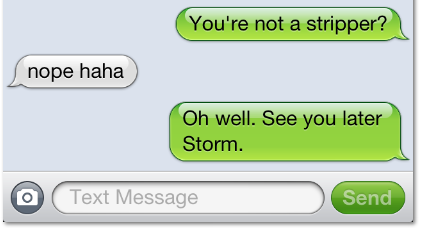This Saturday I’m going to my first football match since arriving in America when the New York Red Bulls play the Colorado Rapids at their home stadium in New Jersey. Before the kick-off arrives I’ve found myself musing over how my first game in the land of milk and honey may differ from my last experience of professional football in Britain – a windswept, bitterly cold, extremity-shriveling, Bovril-hugging afternoon spent in Aberdeen. I mean, will it be all hotdogs and hooting? Will we be called to “all rise for the national anthem”? And, if there’s a lull in play, will a monkey be introduced to jazz up the proceedings?
Probably not. In America football seems to exist in its own distinct ecosystem, tucked away from the razzmatazz and bombast of other mainstream sports. The fans that I have met so far are all knowledgeable and serious about supporting their teams, and for a sport that’s still burgeoning and coming to terms with its own identity (long muddied by the negative and, well, mumsy connotations of the “soccer mom” tag) this can only be a good thing. It’s almost as if football is the cool, rebellious upstart cousin of the established franchise sports like baseball, basketball, crash helmet rugby and ultra-violent ice skating.
Still, those stock premonitions of a rally monkey being brought out to appease a restless crowd are intriguing. If British sports fans conjure up such limited images of their American counterparts, then what on earth do they think of us? If we were provided with a portal into the mind of, say, a Chicago Bears fan and asked them to imagine a “soccer” crowd from across the pond then what would we see? Cloth caps? Wooden ratchets? Pies like pastry shot puts? Or, would they see them through the prism of darker images borrowed from football hooligan films like Green Street?
It’s impossible for me to say, I don’t know any Chicago Bears fans.
I do know a bit about football hooligan films though. In fact, I published a bit of a mini-thesis on them here in First Touch magazine. And here it is again, but with embedded clips so that those of you who are uninitiated in the world of top boys and firms and Stone Island jumpers and Stanley knives and always standing your ground will be able to form your own misguided opinions of British football crowds.
Enjoy.
Film Crews
It’s notoriously difficult to predict what moviegoers will want to watch. Who could have foreseen that one science fiction film concerned with the plight of blue aliens would prove to be so phenomenally successful while another, concerned with the plight of Eddie Murphy, would turn out to be such a monumental failure? For film investors there would seem to be no such thing as a sure thing, only a game of chance on a played out on a board full of ladders like Avatar and snakes like The Adventures of Pluto Nash. Unless they happen to put their money into a low-budget British football hooligan movie that is – then they seem certain to see a return on their investment. If there is one thing that UK audiences are certain to pay money to see, it’s forty angry hooligans trying to puree one another with iron bars.
But where did this love affair with the beautiful game’s outlaws begin?
Spool back to the late eighties and you’ve got Thatcher’s Britain – miserable, greedy, wearing shoulder pads. A life of miners’ strikes and mournful Morrisey lyrics. It was in this petri dish that the football hooligan film grew.
In 1988 the BBC screened an hour long drama titled The Firm, a jarring, unflinching look at the exploits of a gang of football hooligans. This film was a revelation because it slayed the prevailing media caricature of hooligans as angry men with tattooed knuckles, shaved heads and underbites. The Firm taught us that they are people too – hooligans have jobs and families and are prey to the same kind of issues that afflict us all. In fact, they blend in so well that your next door neighbour could be in a gang, there’s just no way of knowing (unless you peer over the garden fence and see him taking a bat to a Millwall supporter’s head).
Not that it was director Alan Clarke’s intention to give English footballs’ bogeymen an acceptable face. Clarke, who so expertly portrayed the destructive nature of young men in his earlier films Scum and Made in Britain, wanted his audience to see brutality in the cold light of day. Stripped of almost all non-diegetic sound, the violence in The Firm is prosaic and grim. There’s nothing romantic about getting your head panned in after all, and that’s exactly the point that Clarke wanted to make. The camera lingers on the violence not because it’s cool or glamorous, but because it’s intended to make us recoil in horror.
Despite Clarke’s intentions, The Firm was widely criticised for granting thuggery so much screen time and denounced as a tactless attempt to view hooliganism objectively. Television watchdog The Broadcasting Standards Council decried the film, accusing it of “using violence to sustain the audience’s interest”, and few bought into the idea that this was the cinematic equivalent of your father giving you a drag of a cigarette when you’re eleven – the hope being that you’ll cough and splutter and realise that, even if it looks glamorous, the truth is that it’s a filthy habit. The problem is, of course, that regardless of how dreadful the first drag tastes, many of us end up hooked. And this proved to be the case with The Firm – audiences wanted to see more of the same. The football hooligan film genre was born.
Fast forward to the mid-nineties and the next hooligan film appears, this time decked out in bomber jackets, ill-fitting jeans and Doc Martens. It’s easy to trace I.D back to the genre’s wellspring – director Phil Davis played The Firm’s villain, Yeti. Behind the camera Davis deserts the documentary-like style of Alan Clarke’s film, depicting a more hackneyed brand of hooligan. In one memorable scene actor Warren Clarke, jowls billowing like boat sails, announces that he is off to “kick some bleedin’ heads in. Are you up for it?” Clearly the main character John (played with scary-eyed intensity by Reece Dinsdale) can’t resist such an offer – he’s an undercover policeman who becomes so immersed in the heady brew of violence and camaraderie that he never resurfaces.
Where The Firm evoked fear and whimpering with its gritty portrayal of violence, I.D was, conversely, criticised for appearing to lack realism. It appeared that the big screen hooligan was still searching for the elusive winning formula that would please fans of the burgeoning genre, while also appeasing critics quick to condemn frivolous head stamping.
That formula appeared to be found when, after being on pause for about ten years, the noughties’ incarnation of the football hooligan crashed onto our screens in The Football Factory. This time he wasn’t just tooled up with baseball bats and Stanley knives, he was also brandishing a nihilistic message. But, as you would expect, it’s not a particularly subtle one – in fact it’s made clear from the very moment that lead actor Danny Dyer (glistening with hair gel, brimming with East End charm) marches onto our screens and declares that he leads an unfulfilling and meaningless life, besides “occasionally kicking f**k out of someone”.
Despite some pretty coarse dialogue and gaudy fight scenes, director Nick Love does do a reasonable job of explaining the mayhem. Love’s hooligans aren’t criminals and psychopaths, they’re just bored. It’s a simple and somewhat shallow explanation for taking a boot to another person’s skull, but it rings true all the same. Critics praised this effort to examine the hooligan psyche, with a favourable review in Empire magazine urging any undecided moviegoers to “discover a film that’s less concerned with football violence and more intrigued by the destructive nature of male bonding, the male ego and male discontentment”. As well as garnering favourable reviews from many critics the film also become something of a cult classic when it was released on DVD, shifting more than one and a half million units – not a bad return for a film that was produced on a shoestring budget. This success soon turned heads in Tinseltown.
The sense of truth found in The Football Factory was sadly absent when Hollywood finally got its hands on the football hooligan in 2005. Green Street has easily the most implausible plotline of any of the films in the hooligan stable – disgraced Harvard student comes to England, falls in with feared firm, learns valuable life lessons, and then leaves with all limbs intact. Worse than the chimerical plotline was the bizarre decisions to cast elfin actor Elijah Wood in the lead role (although it has been suggested that this curious casting decision was actually a masterstroke as it gave us all the opportunity to see Frodo Baggins get his head panned in). Despite the film’s shortcomings it gained worldwide attention and garnered some favourable reviews from Hollywood’s elite (legendary critic Robert Ebert gave the film a favourable review, praising it for the “kinetic energy unleashed in the fights”). The English Disease had now captured an international audience.
It was in 2007 that the genre truly scraped the bottom of the barrel. Rise of the Footsoldier, tells the story of notorious hooligan Carlton Leach, charting his journey from the terraces to becoming top boy. Like Green Street, it’s a film hamstrung by the physical improbability of its male lead – actor Ricci Harnett bears an uncanny, and unfortunate, resemblance to Jimmy Krankie. If you can imagine a sexually insane Krankie marauding the streets of London with an iron bar, making obscene gestures and destroying parked cars then you’ll have a pretty good idea of how strange this performance looks. Harnett aside, the rest of the film is also a farce. With the unconvincing acting, bad wigs, hackneyed dialogue and cloying melodrama the whole thing plays out like an ultraviolent episode of Eastenders. Rise of the Footsoldier was also savaged by critics who scrambled out of theatres to hunt down the choicest adjectives to describe how dreadful they thought it was (one, from the BBC Movies website, wrote that the film left her feeling “violated”).
A slew of movies soon followed as the hooligan appeared to be a bankable commodity (if Rise of the Footsoldier managed to attract an audience then surely anything would). In 2008 director Jon Baird’s film Cass presented the hooligan film in standard biopic form. Then the following year Pat Holden’s Awaydays tipped everything upside down by making one of its principle characters a homosexual, causing thousands of men to share in the same shocking epiphany – maybe there is something a little gay about all of this male bonding.
Despite these worrying revelations, hooliganism secured its status as perennial film fodder when the genre’s fountainhead was retrofitted. In 2009 Nick Love remade The Firm, bringing the thug on film movement full circle in a little over twenty years and proving that there is such an appetite for these films that the public won’t stop at seeing them just once.
As long as demand remains so high it’s surely only a matter of time before the next hooligan film hits our screens. Let’s just hope it’s not Rise of the Footsoldier 2.








































